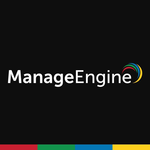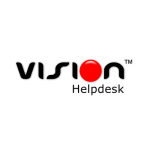I function inside of CMDB, Chain Configuration Management Data Base. I use it to work with our change management process, or configuration management process. To reduce down time, mean time to repair, audit functionality. Pretty much everything within CMDB, which is a subset of Service Desk.
It's a part of of a tool that other people use, and the big part of the problem with CMDB is getting a high rate of adoption. CMDB is not something that people see as a necessity, especially technical people. They don't want to deal with auditing, they don't want to deal with a lot of that stuff. So the fact that it's something they're already familiar with is a big deal. For a lot of companies, it's not built into their service desk, to my understanding. So that's a good thing about it.
It's fairly easy to use, from a UI standpoint. Those are the main things that I would say are good about it.
It helps us have a clearer understanding of our environment, that's the big part of it that I use. As far as the ticketing part of that, it integrates within our email. If you're an end user, just a person, you don't need to go the website at all, you can do almost everything through email, so that is nice.
I would like to see the API cleaned up. Right now, because of the way CA works, they combine a lot of applications. That's just the nature of it, they can't fix that probably. But the API is a mess, it's hard to navigate, hard to figure out. The documentation is okay, but from a back-end standpoint it's kind of difficult to work.
At our company, I think it's pretty stable. We have a good set of people working on it. I don't typically have any problems, with the front-facing part of it. There are not any really issues of stability from what I can see.
I would say we're a small to middle-sized company, and we haven't had any issues with anything like that. I wouldn't say it's a problem for us at all.
They've been good. My biggest problems have been working through the API for Service Desk, it's kind of a mess, that would be a nice way to put it.
They've been able to help me to get through, to where I need to go. Without that it's difficult, to say the least.
My company has been using CA for a long time.
I've been a part of PoCs at our company. When looking to invest in a vendor, the criteria include
- cost - obviously a big concern
- functionality - if it's going to work within the tools that we have now.
We're really big into automation, so integrating with other tools that we have is important. And CA - since we use so many of their products, between the mainframe, Service Desk - we really do use quite a bit of what they have. So they have a leg up as far as that goes.
I've worked with quite a few different products, from ServiceNow to Remedy, a lot of ticketing systems and the like. This is my first CMDB, as my main function. I would rate Service Desk lower than some of those other ones that I've used, because it seems like it's a little bit behind with innovative type of stuff. I like the UI, it's good. I would say, stand-alone, if I wasn't comparing it to anything else, it really does do what I need it to do, so I would give it a seven or an eight out of 10. Comparing it to other things, it would be about a six, because I think other software is better.
In terms of advice to a colleague looking at similar solutions, it would really depend on what they need. If they were looking for CMDB functionality, I think it really does do a good job of that. I think if you have other CA products, it does a good job of integrating with a lot of that. But I would encourage them to look at other products as well. I don't think it's an "industry leader." I think it's right up there with other tools, but depending on what you're doing and your environment, I think it's on-par with everything else.

















A correction to the last paragraph of the review: the latest version of CA Service Desk Manager is not 14.x; the latest release is 17.0 which has been on the market since April 2017. Release 12.9 was introduced in 2013 and CA announced 12.9 will not be supported after March 31, 2018. I strongly suggests upgrading to 17.0 before considering changing solutions.